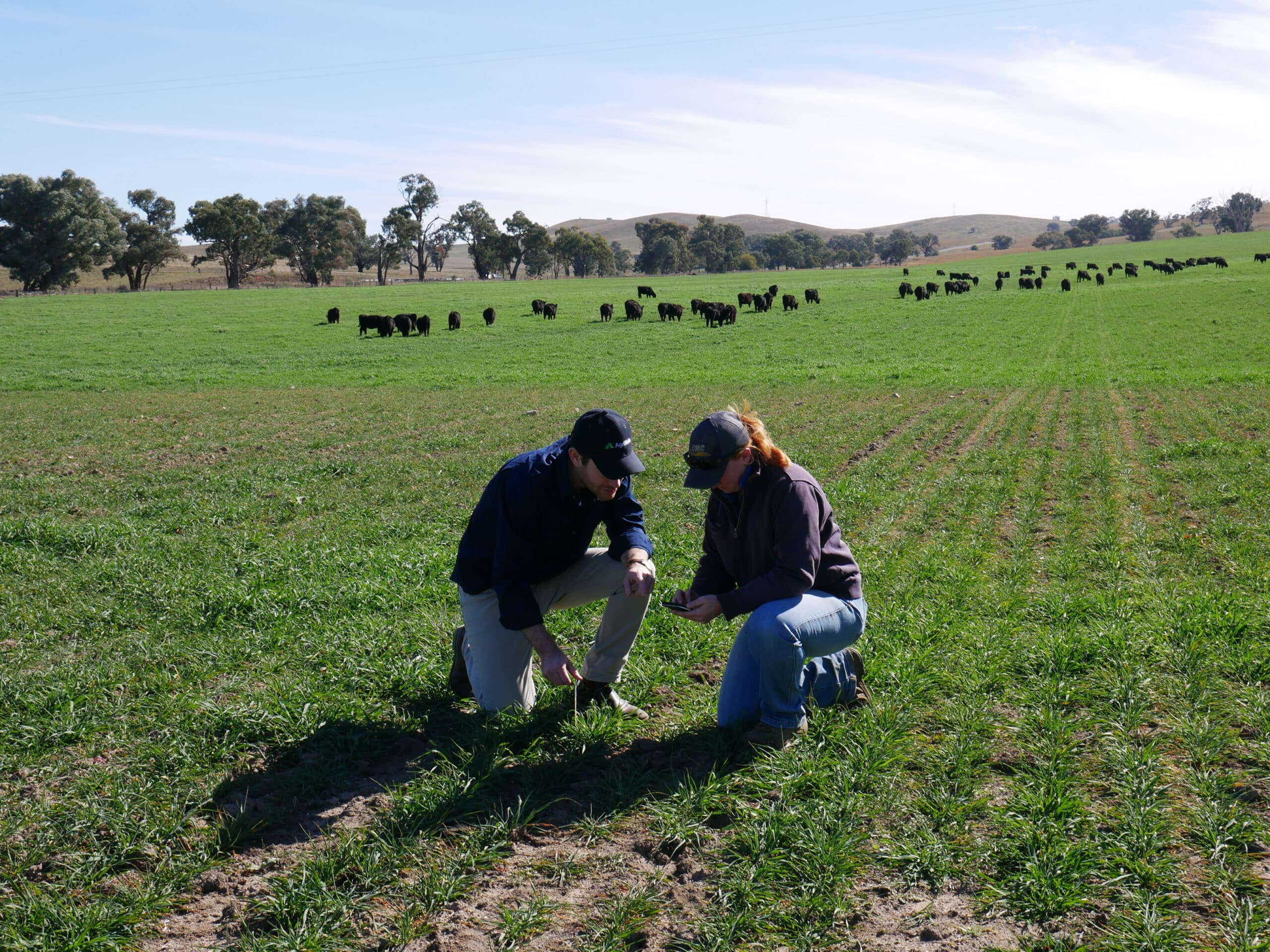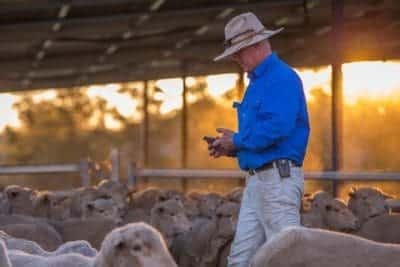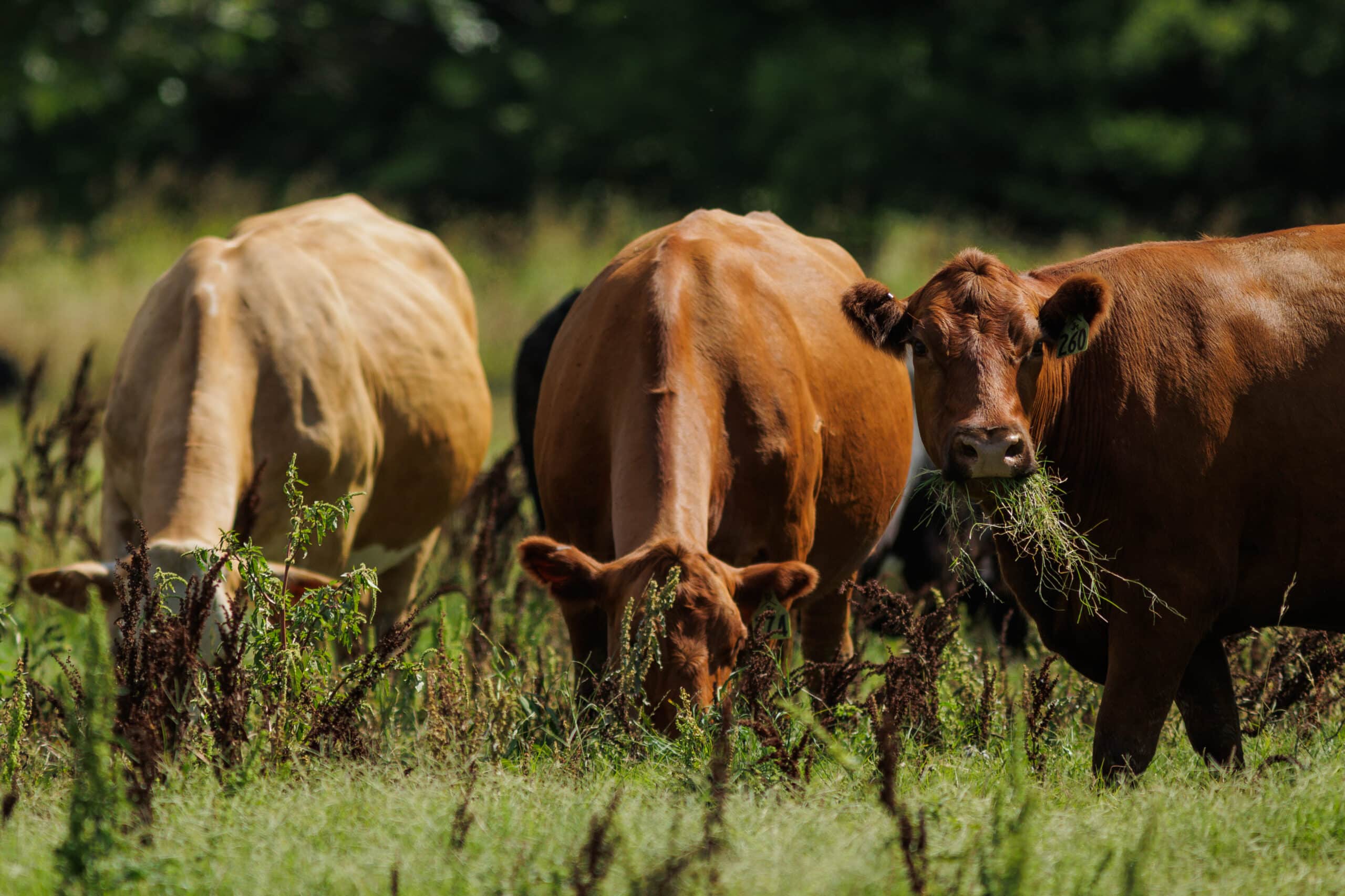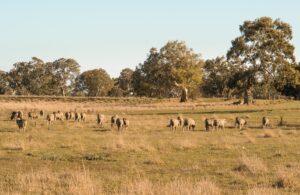Your Short Guide to Carbon and Environmental Credits

We’ve always said farmers and ranchers are true custodians of the land. They preserve and improve the properties they work on for future generations. Finally, wider society is catching on.
Governments striving to reduce carbon emissions realize the critical role farmers and ranchers have to play. Polluting industries trying to reduce their carbon footprint are looking to agriculture to offset their emissions. Financial institutions concerned with ethical, sustainable investment are helping the carbon market grow. There are rewards waiting for livestock producers conserving and improving the environment.
How Farmers and Ranchers Help Mitigate Climate Change
Sustainable agricultural practices can draw carbon dioxide from the atmosphere. It’s stored in soils and trees in a process called carbon sequestration.
Ranchers and farmers can sequester carbon through various methods. These include restoring grasslands, correcting mineral deficiencies in the soil, and using time-controlled grazing methods. Using cover crops and minimum or no-till cultivation also helps sequester carbon.
Land managers also help the environment by reducing their greenhouse gas emissions. Strategic fertilizer use, feed mixes that reduce methane production, and managing livestock for more efficient production are just a few effective practices.
Embracing these techniques can lead to greater efficiencies. Better still, farmers have an opportunity to profit from participation in carbon markets. Ultimately, you can look after the environment and your bank balance.
Carbon Markets Across the Globe
Australia
Australia’s Carbon Farming Initiative, launched in 2011, was the world’s first national scheme to regulate the generation and trade of carbon credits from farming and forestry. It has since been integrated into the Emissions Reduction Fund (ERF).
The ERF sees the federal government issue Australian carbon credit units (ACCUs) to farmers who run eligible projects. Each ACCU generated represents one tonne of carbon dioxide equivalent greenhouse gas emissions sequestered or avoided.
Farmers can sell ACCUs in government auctions or to outside purchasers through a fixed commercial agreement or on the spot market.
Farmers can also generate and sell carbon credits in voluntary markets, outside of the Australian government’s jurisdiction. Whether or not you are working within the ERF framework, you may consider using a third party to facilitate the process.
UK
The UK Emissions Trading Scheme (ETS), a cap-and-trade scheme which seeks to reduce greenhouse gas (GHG) emissions in energy intensive sectors, began operation on 1 January 2021. The scheme is still developing, and it remains to be seen how farmers will be regulated or rewarded. Outside of the ETS, there are two government-backed schemes that allow farmers to generate carbon credits.
Under the Woodland Carbon Code, Woodland Carbon Units (WCUs) are generated through verification checks which assess how the woodland has grown and how much carbon dioxide has been captured.
The Woodland Carbon Guarantee allows English farmers to sell WCUs to the government for a guaranteed price every 5 or 10 years up to 2055/56. If you prefer, or if you’re outside England, you can sell credits on the open market.
The Peatland Code, a voluntary certification standard for UK peatland projects, allows the generation of independently verified carbon units, which you can trade on the voluntary carbon market. To date, there has been little uptake of this scheme.
The Sustainable Soils Alliance, with government funding, is working to develop a UK Farm Soil Carbon Code (UKFSCC). This will set out a range of protocols for farmers to measure, record and verify changes in soil carbon stock and GHG emissions.
Soil carbon schemes are already running in the UK, outside of a government framework. A startup called ruumi, for example, verifies carbon project data using the Verra Verified Carbon Standard, which is the most widely used voluntary offsets program. Ruumi also supports farmers to transition to more sustainable practices by providing remote sensing estimates of paddock-level forage to AgriWebb customers.
United States
Currently, the U.S. doesn’t regulate greenhouse gas emissions, but there are state-based cap-and-trade programs. These programs regulate the highest emitting industries — particularly power plants— rather than agriculture. Generally, polluters under these cap-and-trade programs can’t use agricultural carbon offsets. An exception is projects around anaerobic digesters on dairies or feedlots.
Generally, carbon offsets generated on U.S. farms and ranches are traded through voluntary markets. Here the focus is on offsetting corporate and consumer emissions. Several organizations developing agricultural carbon projects have cropped up. These include ESMC, Indigo Ag, Terra Global Capital, Regen Network, and The Western Sustainability Exchange.
Many of these organizations follow Verra Verified Carbon Standard methodologies. They manage project financing, implementation, registration, and reporting. This is generally in exchange for a portion of the carbon offset income a farmer would receive.
Considerations Before “Farming” Carbon
The carbon market is a fast-changing space. Before working to earn carbon credits, there are a lot of questions to ask beyond “How and when will I get my money?” – though it is fair that this is one of the primary concerns.
Some Questions to Ask…
- How will selling carbon credits affect any carbon-neutral goals you have?
- How will any new scheme affect existing government-backed environmental programs?
- Will the scheme affect branded or supply chain sustainability programs you are part of or hope to join ?
- Can you get financial support for implementing changes to management practices?
- Do necessary management changes align with your business plan?
- Are there penalties in the event of floods or droughts that release soil carbon?
- Will it be necessary to undertake benchmarking and ongoing sampling and measurement to verify soil carbon stocks?
- Who pays for measurement and verification costs?
- What are your long-term legal and financial obligations?
- Is the carbon offset provider compliant with relevant local legislation?
- Are you prepared to forgo future opportunities that may arise as carbon markets mature?
Farmers who consider selling carbon need to understand any conditions, data ownership issues, or potential penalties that may exist. You may want a legal advisor to review your contract.
The carbon sequestered and practices adopted will vary farm to farm. Therefore, it is critical to understand the costs and risks of implementing new practices before enrolling in carbon market programs.
A reputable company will go through a baseline measurement with you and suggest what you might earn based on your farm practices and farm topography. Many farmers are reluctant to get involved in this emerging market, but ignoring it comes with its own risks. Farmers currently increasing soil carbon may miss out on compensation for historical improvements.
If you are improving your land, increasing efficiencies, and reducing inputs, you stand to be twice rewarded. Deciding to sell carbon credits is a long-term commitment, and not one to be taken lightly. But it’s an opportunity that should be explored.
The First Step to Selling Carbon
Carbon markets and other environmental programs are set to become a valuable revenue source. Even if you aren’t ready to jump in feet first, you still need to prepare. One essential step is digitizing your operation.
AgriWebb’s livestock enterprise management platform lets you record all your inputs and livestock movements simply and swiftly. The data you secure makes it easier to join the programs that reward your good work. What’s more, the platform gives you the insights you need to improve your operation.
See how grazing strategies and decisions regarding fertilizer or cover crops affect paddock performance – all in real time. Compare average daily gains and projected live weights, so you can identify performers and improve your herd. Increase efficiencies across your operation, so you can reduce your own greenhouse gas emissions. AgriWebb puts the power in your hands.
The time to future-proof your farm is now. Contact AgriWebb today, to find out how we can help you on your journey to a more sustainable future for your land and legacy.



